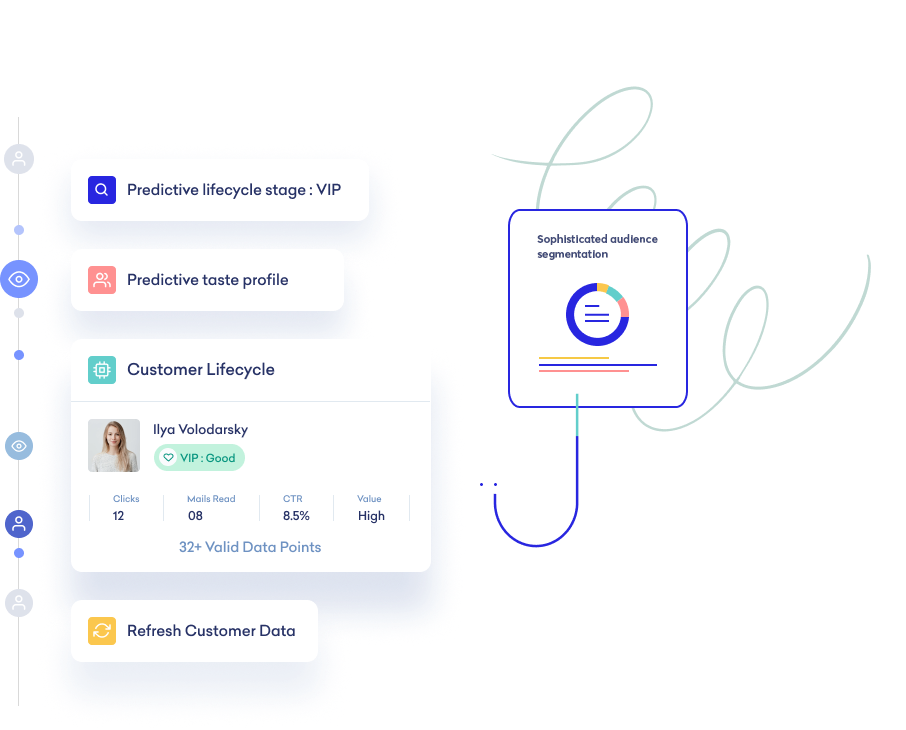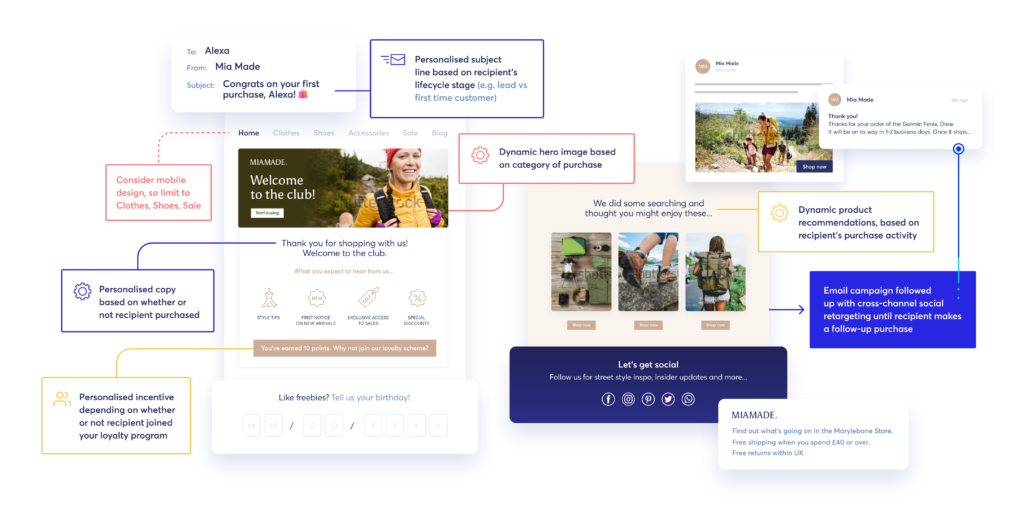Retailers offering omnichannel experiences within the last few years used to have a competitive advantage. They were seen as cutting-edge. But now, haphazard efforts to join up the online and offline customer journey with multiple technologies and multiple approaches can quickly destroy value for brands following suit.
When the opportunity cost of not delivering omnichannel experiences sits at 10% in lost revenue, brands today are finding that poor-quality omnichannel experiences are directly impacting their bottom line.
Believe it or not ‘the omnichannel experience’ is more than just a marketing buzz phrase. Ometria data found that customers who shopped both in-store and online had an increase in order frequency of 140% vs customers who only shopped online. Their lifetime value was also 49% higher.
But when 35% of marketers are citing poor quality data as a barrier to effective targeting, retailers need to be able to trust the data they’re integrating as an essential starting point.
With 84% of consumers believing retailers should be doing more to integrate their online and offline channels, it’s clear that the omnichannel experience is reflecting a true consumer need. If the key to a joined-up customer experience starts with well-integrated data, customer insights must be housed in one place to avoid touchpoint inconsistencies.
Integrating data from sources such as a POS, customer service providers, loyalty apps and review platforms will help in-store teams to automatically pass data to a centralised hub (or CDP). The ability to do this though, can only be led by technology with a fluid and open API.
In addition, modern marketers wanting not only seamless journeys for their customers but efficient ways of executing, has meant that many tech-savvy retailers are now selecting CDPs that sit within an experience platform.
When a CDP is separate from marketing execution platforms, real-time data can be heavily impacted. As a result, retailers risk delivering fragmented customer experiences to their customers which ultimately leave buyers feeling misunderstood. Luckily, there is a solution that springboards intricate customer data into customer marketing.

Astrid & Miyu, the fast-growing jewelry brand on a mission to ‘revolutionize the jewelry experience’ has been successfully using Ometria to merge their online and offline journeys as they continue to build strong data foundations.
We spoke to Astrid & Miyu’s Lucy Kemish, Global Senior CRM Manager, who told us that “being able to see a whole customer profile in Ometria, taking into account their appointment history is so powerful” when helping them understand their customers.
“We are also able to see online and in-store transactions all in one place… The same applies for loyalty, which means our store teams are able to see a customer’s tier level and reward points for their purchases. This allows for a really consistent experience whether you’re shopping online with us or in-store, either buying products or having an appointment.”
You can read the full case study here.
Similarly, Ledbury, the luxury shirt brand trusted by the US market, has been using Ometria to scale their personalized customer communications using both online and offline data.
Using automated messages categorized by offline purchase location, Ledbury was able to send post-purchase emails to customers who completed their order in-store, working to aid a consistent and relevant omnichannel experience for their customers.
For shoppers whose preference remained online, Ledbury could use their supplied zip-code to send incentives encouraging them to visit their closest physical store, offering them a discount on any item bought in-store after an online purchase.
Taking this data-led approach, Ledbury saw a 55% increase in orders from returning customers.
You can read the full case study here.

If the evolution of multi-channel, cross-channel and now omnichannel isn’t enough, there’s yet another retail marketing phenomenon marketers to watch this year: the channel-less approach.
Contrary to its name, it’s not here to deny the existence of different marketing channels, its purpose is to highlight the danger of focusing on channels instead of individual customers.
With each channel siloed from the next, it becomes more difficult for communication consistency to prevail. If brands want to communicate a truly consistent experience; instead of focusing on channels as separate entities they must look to eradicate both team and channel siloes. Only then can they reap the rewards of true customer value.
The way to do this? Marketing teams must work towards a common goal: achieving a healthy customer obsession. After all, true customer retention lies within the niches and not the masses.
Want to find out how brands like M&S, Dr. Martens and Farfetch define customer obsession to increase retention? Get the Customer Obsession Report.
Ometria is committed to protecting and respecting your privacy, and we’ll only use your personal information to administer your account and to provide the products and services you requested from us. You may unsubscribe from these communications at any time. For information on how to unsubscribe, as well as our privacy practices and commitment to protecting your privacy, please review our Privacy Policy.
Take the first step toward smarter customer marketing